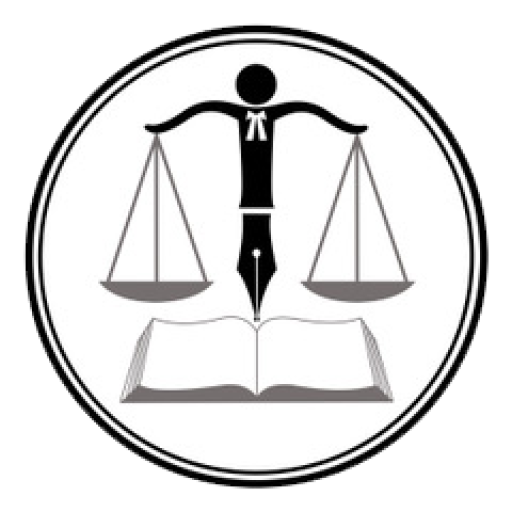This week’s top three summaries: R v James, 2025 ONCA 213: s24(2) #discoverability, R v Gordon, 2025 ONCA 201, judge #promise and GP, R v JC, 2025 ONCA 230: expanded #amicus
R v James, 2025 ONCA 213
[March 20, 2025] Charter s.24(2): Discoverability and Cumulative Effect of Breaches [Reasons by van Rensburg J.A. with B.W. Miller and S. Gomery JJ.A concurring]
AUTHOR’S NOTE: Discoverability of evidence plays a crucial role in the second stage of the Charter s.24(2) analysis. It can either mitigate or aggravate the seriousness of a Charter breach:
-
If the evidence would have been discovered lawfully, the breach may seem technical, reducing its impact.
-
However, if police could have obtained the evidence lawfully but chose not to, this aggravates the violation.
In this case, the trial judge relied too heavily on discoverability to justify admitting evidence, failing to account for the cumulative impact of multiple Charter breaches. The Court of Appeal intervened, reassessed s.24(2), and excluded the evidence due to the Charter violations of s.10(b) and s.8.
[1] The appellant was charged with trafficking crack cocaine and possessing fentanyl and crack cocaine for the purpose of trafficking following his arrest at a convenience store in downtown Toronto. At trial, he brought a Charter application alleging breaches of ss. 8, 9 and 10(b), and seeking under s. 24(2) to exclude evidence: crack cocaine that was seized at the store when he was arrested, scales and money found in the search of his vehicle, and fentanyl and crack cocaine that were removed from his pants when he arrived at the police station.
[2] The trial judge found that the police had breached certain of the appellant’s Charter rights. He concluded that the appellant’s arrest and search incident to the arrest did not contravene the Charter, but that the search of his motor vehicle contravened s. 8, and that the police violated s. 10(b) when they spoke with him and searched him after he had indicated he wanted to speak with counsel but before he was afforded the opportunity to do so. Only the fruits of the motor vehicle search were excluded from evidence at trial. While the trial judge was very critical of the police officers’ conduct, and he held that the first Grant factor pulled heavily in favour of exclusion, he ultimately admitted in evidence the drugs found in the appellant’s pants.
[3] With the admission of this evidence and the trial judge’s acceptance of the testimony of the arresting officers that they had seen the appellant transfer a small amount of crack cocaine by placing it on a shelf in the convenience store, the appellant was convicted of all three offences…
[4] The appellant appeals his convictions, submitting that the trial judge erred in failing to exclude from his trial the evidence of the drugs that were seized in violation of his s. 10(b) rights…
[5] For the reasons that follow, I would allow the appeal from the appellant’s convictions for possession for the purpose of trafficking fentanyl and crack cocaine, and, recognizing that the evidence of the drugs seized from the appellant was essential to the appellant’s convictions on these charges, I would substitute verdicts of acquittal…
[6] Briefly, with respect to the possession for the purpose of trafficking convictions, the trial judge erred in his Grant analysis when he decided not to exclude the drug evidence that was seized from the appellant on his arrival at the police station. In considering the first Grant factor, the trial judge did not give proper effect to his significant findings of police misconduct that demonstrated a serious disregard for the appellant’s Charter rights, and the officers’ dishonest and misleading evidence in court. In concluding that the second Grant factor favoured the admission of the evidence, the trial judge allowed the fact that the drugs would have been found in any event to overwhelm his analysis…
…the trial judge completed his analysis without conducting a final balancing to determine whether, considering all the circumstances, admission of the evidence would bring the administration of justice into disrepute. Conducting the Grant analysis anew, I would exclude the evidence of the drugs that were seized in violation of the appellant’s s. 10(b) rights.
B. THE CHARTER APPLICATION AND THE TRIAL JUDGE’S FINDINGS
[18] The trial judge was very critical of various aspects of the police officers’ evidence, concluding that several officers had lied under oath. The trial judge also concluded that the appellant had exaggerated his evidence with respect to his treatment by the police and that he was not entirely honest with the court.
[20] As for the alleged violation of s. 8 in the search of the appellant’s vehicle, the trial judge did not believe the arresting officers’ evidence that they conducted an “inventory search” to ensure that none of the appellant’s belongings went missing after someone told them the car would be towed. Rather, as P.C. Esteves eventually admitted, the purpose of the search was to see if there were more drugs or related evidence in the vehicle, and the police had no legal authority to search the vehicle. The Crown conceded that the search of the appellant’s car violated s. 8 and did not seek to lead any evidence resulting from that search. According to the trial judge, the evidence demonstrated a “rather cavalier attitude towards the [appellant’s] Charter rights”, and the seriousness of the breach was aggravated by the fact that the arresting officers were dishonest about the reason for the search.
[21] The trial judge concluded that the implementational components of the appellant’s rights under s. 10(b) were breached by P.C. Freeman’s conduct at the police station. D.C. Sukman had explained both the arrest and the appellant’s s. 10(b) rights when the appellant was taken to the police vehicle. While the arresting officers could not recall any such conversation, the trial judge accepted the appellant’s evidence that he had asserted his s. 10(b) rights by asking to speak with a lawyer when he was still in the convenience store. The trial judge concluded that neither of the arresting officers had advised the transporting officers about the appellant having asserted his right to counsel prior to his transport to the station, and that P.C. Freeman had not, in turn, asked the transporting officers about the appellant’s right to counsel. He found that the appellant’s rights under s. 10(b) were violated when, before he had the opportunity to speak to counsel, and without asking him whether he wished to speak to counsel, he was questioned and searched, and fentanyl and crack cocaine were retrieved from his pants.
[22] The trial judge found that P.C. Freeman was a dishonest witness overall when he testified about his interactions with the appellant. He referred to the sally port entrance video evidence that captured the officer’s “aggressive” and “animated” manner of speaking with the appellant. He rejected the officer’s testimony that he had asked that the in-car camera be shut off for investigative purposes in order to protect the appellant, who he thought was going to try to provide police with sensitive information. The trial judge found that the officer was dishonest when he initially denied (but eventually admitted to) asking the appellant whether he had drugs on him. He found that the officer lied when he claimed he could not remember who removed the drugs from the appellant’s pants and when, after conceding he might have taken the fentanyl out of the back of the appellant’s pants, he insisted that he had not removed the crack cocaine.
[23] The trial judge also criticized the transporting officers’ evidence that, although they were close enough to see and hear what was going on, they did not remember the interaction between the appellant and P.C. Freeman after the in-car camera was turned off. He characterized their evidence as at best a “failure to take proper notes and a failure of memory” and at worst as “not being honest with the Court”.
[26] With respect to the s. 10(b) breach, the trial judge concluded that the conduct outside the sally port, both in questioning and searching the appellant, constituted a serious violation of his s. 10(b) rights and that the officer had acted in reckless disregard of these important rights. He concluded that the first prong of the Grant test strongly favoured the exclusion of the drugs seized by the officer.
28] With respect to the s. 10(b) violation, after stating that the violation was serious because the implementational duties imposed by the Charter-protected right to counsel had been ignored, the trial judge noted that the drugs would have been discovered once the appellant was subjected to a Level 3 search after he was booked, regardless of the breach. As such, he observed that the practical effect of the s. 10(b) breach was that the drugs were discovered and seized slightly earlier than they otherwise would have been. The trial judge concluded that this branch of the analysis supported the inclusion of the evidence seized from the appellant in the sally port area.
[30] The trial judge concluded his analysis by stating that he would exclude from the trial the products of the search of the appellant’s vehicle, and that he would not exclude the drugs seized by P.C. Freeman.
D. DISCUSSION
(1) THE CHARTER GROUND OF APPEAL
(a) Standard of review
[34] On an appeal of a s. 24(2) decision, a trial judge’s assessment of the Grant factors in light of the facts is typically entitled to deference. A s. 24(2) decision is reversible only when there is an error in legal principle, a palpable and overriding factual error, or an unreasonable determination: R. v. Truong, 2025 ONCA 69, at para. 37.
b) The first Grant factor
(i) The trial judge erred in compartmentalizing his assessment of the Charter breaches under s. 24(2)
[36] The appellant alleges that the trial judge adopted a compartmentalized approach to the Charter breaches, and that he failed to take into consideration the pattern of Charter-infringing conduct by the police. As a result, although the trial judge concluded that the first Grant factor weighed in favour of exclusion of both the evidence found in the search of the appellant’s vehicle and in the search of the appellant outside the sally port of the police station, the trial judge underestimated the seriousness of the police misconduct, and accordingly the strength of the first Grant factor in the overall analysis.
[37] As this court noted in Truong, a failure to consider related breaches together can distort the view taken of the seriousness of the Charter-offending conduct, and it may fail to capture the overall impact of the offending conduct on the accused’s Charter-protected interests, since they are all “part of the constellation of factors” relevant to this question: at para. 42, citing R. v. Mhlongo, 2017 ONCA 562, 355 C.C.C. (3d) 1, at paras. 60-62; R. v. Just, 2020 ONCA 362, 388 C.C.C. (3d) 273, at paras. 38 and 54; R. v. Zacharias, 2023 SCC 30, 487 D.L.R. (4th) 571, at para. 49.
[38] I agree with the appellant that the trial judge, in conducting his s. 24(2) analysis, adopted a compartmentalized approach to the Charter breaches. For each breach, he concluded separately that the police misconduct was serious. With respect to the s. 8 breach, he made an express finding of bad faith, which he said strongly favoured the exclusion of the evidence from the appellant’s car. With respect to the s. 10(b) breach, the trial judge concluded that P.C. Freeman, both in his questioning and search of the appellant, acted in reckless disregard of the appellant’s rights, which strongly favoured exclusion of the drugs.
[41] While the trial judge did not accept the argument at first instance that the breaches were consistent with other breaches by officers at 51 Division, and accordingly were systemic, he found multiple breaches in the specific dealings with the appellant, with officers showing a “cavalier attitude” and a “reckless disregard for” the appellant’s Charter rights. The fact that the appellant initiated the contact with P.C. Freeman does not justify or explain the officer’s failure to “hold off”, which was the breach of the s. 10(b) implementational duty, nor does it in any way attenuate the seriousness of the Charter-breaching conduct: an officer who, up to that point had no involvement in the police investigation or the appellant’s arrest, and who did not know whether the appellant had spoken with legal counsel, asked the appellant whether he had any drugs on him and then searched him by reaching into his pants.
42] By dealing separately with the s. 8 breach in the search of the vehicle and with the s. 10(b) breach in the search of the appellant outside the sally port, the trial judge did not give effect to the fact that the multiple breaches demonstrated a pattern of police disregard for the appellant’s rights.
(ii) The trial judge erred in failing to consider the impact of the police officers’ dishonesty
[44] Police dishonesty aggravates the seriousness of a Charter breach and is properly considered in relation to the first Grant factor given the need for a court to dissociate itself from such behaviour: R. v. Harrison, 2009 SCC 34, [2009] 2 S.C.R. 494, at para. 26. The failure to consider police dishonesty or understating its impact in the s. 24(2) assessment is an error: R. v. Lai, 2019 ONCA 420, at paras. 13-23; R. v. Pino, 2016 ONCA 389, 130 O.R. (3d) 561, at paras. 100-103.
[45] That error was made by the trial judge in this case. Although the trial judge made findings that certain officers had lied under oath, and accordingly rejected aspects of their evidence in finding s. 8 and s. 10(b) breaches, he did not refer to these findings in his assessment of the first Grant factor.
(iii) Conclusion on the trial judge’s assessment of the first Grant factor
[47] Even if the trial judge concluded that the police misconduct in relation to the s. 10(b) breach was very serious and “strongly favoured” the exclusion of the drugs seized from the appellant outside the sally port, in adopting a compartmentalized approach to the breaches that ignored the pattern of police misconduct and in failing to advert to the police dishonesty when officers gave their evidence in court, the trial judge underestimated the seriousness of the state misconduct and the extent to which the first Grant factor alone weighed in favour of exclusion of the evidence.
(c) The second Grant factor
[51] I begin by referring to the specific s. 10(b) breach that the trial judge found in this case. Here, the breach was in an officer’s failure to “hold off” after the appellant had expressed a desire to speak to counsel. This duty requires the police to promptly facilitate access to legal advice and, in the interim, to refrain from taking further investigative steps to elicit evidence from the detainee until the requested access to counsel has been provided: R. v. Burnett, 2021 ONCA 856, 159 O.R. (3d) 321, at paras. 131, 135; R. v. Willier, 2010 SCC 37, [2010] 2 S.C.R. 429, at para. 33.
[52] I agree that the trial judge did not give sufficient consideration to all of the circumstances related to the second Grant factor. He stated only that the violation was “serious in so far as it involved the officer ignoring the implementational duties imposed on police by s. 10(b)”, and that the actions had no effect on when the appellant was permitted to speak to his lawyer. In considering the second Grant factor, the trial judge emphasized one point: that the “practical effect” was that the drugs were seized slightly earlier than they would have been. In other words, the drugs were discoverable irrespective of the Charter breach.
[53] In considering the second Grant factor the court must “look to the interests engaged by the infringed right and examine the degree to which the violation impacted on those interests”: Grant, at para. 77. In the second Grant factor analysis, multiple breaches should be considered as part of “all the circumstances” considered under s. 24(2): Zacharias, at paras. 55-57. The fact that evidence would have been discovered in the police investigation without the Charter breach is relevant to the second Grant factor, but not determinative: R. v. Côté, 2011 SCC 46, [2011] 3 S.C.R. 215, at para. 70; Grant, at para. 122; Rover, at para. 43.
[54] While discoverability of the evidence is a factor appropriately considered at the second stage of the Grant analysis, in this case the trial judge allowed this factor to dominate when he concluded that the second Grant factor supported the inclusion of the evidence at the trial. The trial judge did not address how the failure to “hold off” (which was the essence of the s. 10(b) breach in this case) affected the specific interests of the appellant: his right against self-incrimination and his personal integrity. Unlike many s. 10(b) cases, the impact on the appellant in this case was not in the delay in his ability to speak to counsel – with the various benefits that speaking with counsel could have offered. The fact that a statement was elicited, and an intrusive search was conducted, ought to have been taken into consideration in weighing the second Grant factor.
[55] As in R. v. Jarrett, 2021 ONCA 758, 498 C.R.R. (2d) 38, the trial judge failed to consider all of the interests the appellant’s right to counsel is to protect in his evaluation of the impact of the s. 10(b) breach, and he placed undue emphasis on the lack of a causal connection between the search and seizure of the evidence and the breach, in concluding that the search and seizure would have happened anyway: at paras. 51, 55; see also R. v. Whittaker, 2024 ONCA 182, 435 C.C.C. (3d) 221, at para. 53. [Emphasis by PJM]
[56] Nor did the trial judge consider the cumulative effect of theCharter breaches on the appellant at the second stage of his Grant analysis. Rather, he considered the impact of the s. 10(b) breach separately from the impact of the s. 8 breach, in respect of which the trial judge had concluded that the search “completely undermined [the appellant’s] privacy interests in the contents of the vehicle”…
(d) The third Grant factor
[57] No issue is taken with the trial judge’s consideration of the third Grant factor…
(e) The failure to conduct a final balancing
[58] Finally, the appellant asserts that the trial judge erred by not conducting a final balancing after considering each Grant factor. The appellant asserts that a proper balancing would have recognized that the first and second branches together made a very strong case in favour of exclusion.
[60] Although the trial judge adverted to the need to balance the assessments under the three lines of inquiry to determine whether, considering all the evidence, admission of the evidence would bring the administration of justice into disrepute, he did not conduct a final balancing. Instead, after addressing each of the Grant factors he concluded:
For the foregoing reasons, given the gravity of the violation of [the appellant’s] s. 8 rights arising from the search of the vehicle, I would exclude the products of that search from the trial. As for the drugs seized by P.C. Freeman, while this involves a breach of [the appellant’s] s. 10(b) rights, I would not exclude them from the trial.
[61] A final balancing was essential in this case. Where police misconduct is deliberate, rather than careless or negligent, and where the police give misleading or false evidence, it is particularly important for the court to consider and to weigh in the balance against the truth-seeking interests of the criminal justice system, the need to dissociate the justice system from the police misconduct: see Grant, at para. 75; Harrison at paras. 39-40; Pino, at para. 103.
(f) The s. 24(2) analysis conducted afresh
[65] At the first stage of the Grant analysis, effect must be given to the trial judge’s strong findings of police misconduct and dishonesty. The police conduct in this case was egregious, in terms of the dealings of individual officers with the appellant at the time of his arrest and detention, and their efforts to recast what happened in their evidence at the voir dire, which can only be understood as an attempt to minimize their misconduct. Moreover, even without a finding of systemic misconduct, there was a pattern of disregard for Charterrights. The first Grant factor pulls very strongly in favour of exclusion of the drugs.
[66] The second Grant factor also pulls toward exclusion of the drugs seized outside the sally port from the evidence at trial, albeit not as strongly as the first factor. The s. 10(b) breach resulted in the appellant providing incriminating information: his admission that he had drugs on him, leading to an intrusive search. This was a continuation of theCharter-infringing conduct that occurred when the appellant’s car was searched without reasonable grounds. In effect, the arresting officers and P.C. Freeman demonstrated to the appellant that they were intent on securing evidence of his drug dealing without regard for his Charter rights. While the effect of the s. 10(b) breach was mitigated by the fact that the drugs would have been found irrespective of the breach, this factor alone would not justify admission of the drugs in the circumstances of this case. As Cromwell J. noted in Côté, at paras. 69-74, the fact that evidence is legally discoverable can cut both ways: while it can attenuate the effect on the detainee’s interests under the second Grant factor, it can also heighten the seriousness of the police misconduct in proceeding illegally when a legal avenue was available: see also R. v. Tsekouras, 2017 ONCA 290, 353 C.C.C. (3d) 349, at para. 112, leave to appeal refused, [2017] S.C.C.A. No. 225; see also R. v. S.S., 2023 ONCA 130, 422 C.C.C. (3d) 277, at para. 89. [Emphasis by PJM]
[67] …I acknowledge that there is a very real societal interest in an adjudication of the charges on the merits, and that the third Grant factor strongly favours the admission of the evidence…
[69] Here, the first Grant factor very strongly weighs in favour of exclusion of the evidence, while the second Grant factor also favours exclusion, but not as forcefully. Together, they make a compelling case for exclusion…
…conducting the final balancing, however, the seriousness of the offence cannot be the controlling consideration in the decision whether to exclude evidence: Harrison, at para. 40. I refer to the observations of Doherty J.A. in R. v. McGuffie, 2016 ONCA 365, 131 O.R. (3d) 643, at para. 63, that “if the first and second inquiries make a strong case for exclusion, the third inquiry will seldom, if ever, tip the balance in favour of admissibility”…
[72] The effect of the exclusion of the evidence seized from the appellant outside the sally port area is to set aside the appellant’s convictions on counts 2 and 3, possession of cocaine and fentanyl for the purpose of trafficking, and to acquit him of these charges.






